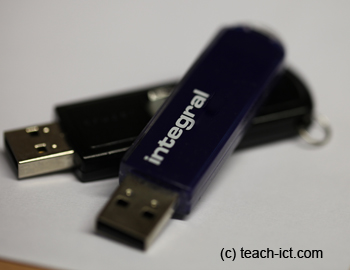10. Flash Memory / Solid State Memory
Flash memory is a non-volatile, solid state storage device.(i.e. keeps its data without power and has no moving parts).

Flash memory is increasingly being used in a wide range of devices. Some examples include:
- Small, lightweight USB memory sticks, available for many Gigabytes.
- Memory cards for digital cameras.
- Main internal storage for tablet computers (SSD)
- Digital audio players.
- Mobile phones.
- Video game hardware.
Flash memory offers very fast access to data and programs. However, retrieving data from an external flash memory device such as a USB stick would be slower than an internal hard disk because the speed of access is restricted by the USB link or connection.
With the development of tablet computers, flash memory is used as the main form of internal storage because there is no room for a traditional hard disk. These disks are called SSD (solid state storage). In this case, access to the data stored in flash memory would be much faster than from a hard disk because there are no moving parts involved.
Currently, the down side to using flash memory as the main storage method is that it has a limited number of read/write cycles which limits its useful life span.
Flash memory, when packaged in a "memory card", is very resilient to damage, unlike many other storage devices. It can withstand extremes of temperature, being immersed in water or being accidentally dropped.
| Property | Notes |
|---|---|
| Type of storage | Solid state |
| Data access | Direct access |
| Cost of storage | More expensive per byte of storage than hard disk, magnetic tape, CDs and DVDs |
| Capacity | 2 gigabytes upwards. |
| Speed | As an external storage device, it is slower than an internal hard disk. It is faster than magnetic tape, CDs and DVDs. If it is used as internal storage, it then becomes faster than an internal hard disk. |
| Portability | Very portable as it is designed to be fitted into small electronic devices. |
| Durability | Very durable. Resistant to pressure, temperature extremes and accidental damage. It has a limited number of read/write cycles which limits its useful life The part of a USB stick which is inserted into the USB port can be snapped off or damaged rendering the device unusable. |
| Reliability | Usually very reliable. |
Challenge see if you can find out one extra fact on this topic that we haven't already told you
Click on this link: Flash Memory
